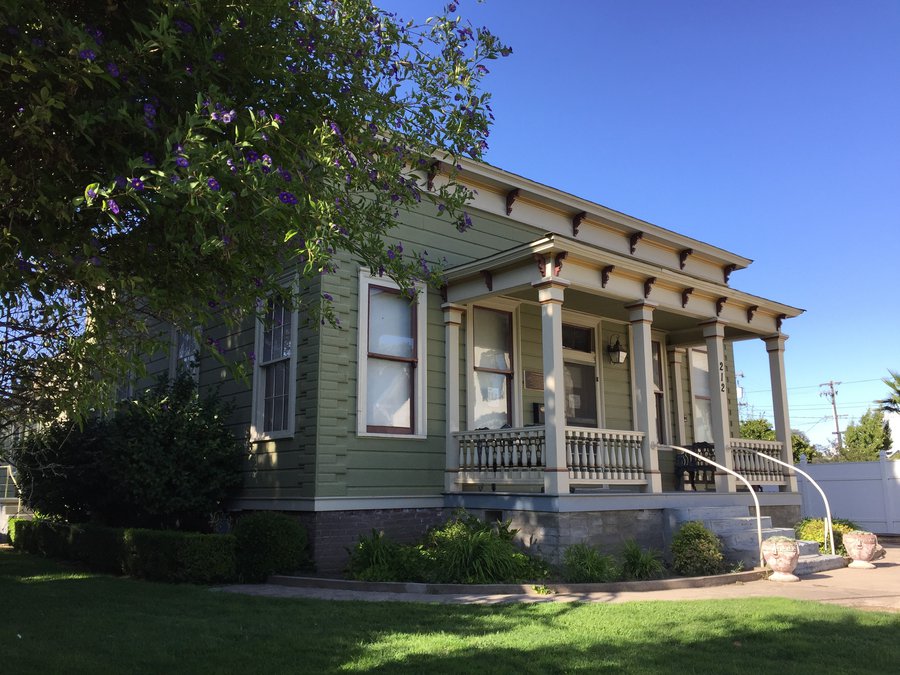In preparation for Oakdale’s 150th anniversary, The Oakdale Leader reached out to a few local families as well as the Oakdale History Museum for some information on who and what has made this town what it is today.
Digging into Oakdale’s history, a few similar themes came across: one, as Barbara Torres pointed out, is that many surnames in Oakdale are Italian. In fact, when the Bianchi family first arrived in the Central Valley in 1902 from San Ginese, Italy, they were surprised by how much of the landscape reminded them of their own Italian hills. Moreover, later generations of the Bianchi-Giovannoni line would spend their mornings in Moss Rose Bakery with fellow Italians to drink coffee together.
Further research found that when Oakdale was first beginning, there were a few common occupations, the most common ones being entrepreneurs, farmers, and cattle ranchers. Though Oakdale began as settlement farming, Robert Sydnor erected the first Oakdale home (today known as the Oakdale History Museum), started a general store, and became Oakdale’s first postmaster. Each family that was interviewed or focused on for this story seems to have some businesses under their belt as well: just as Sydnor started a general store, so the Bianchi’s had the Bianchi Department Store, the Gilberts established the A.L. Gilbert Company, and plenty of other families found Oakdale to be a great place to start a business and community.
As Cap Holliway, editor of the Oakdale Herald (before it was the Oakdale Leader), wrote in 1889, “Oakdale is as healthy a place as can be found in the state ... the place is destined to flourish in the near future.”
When asking around for families that had been a part of Oakdale for generations, another common thread surfaced: a lot of them were involved in farming and in cattle. Whether that be supplying feed, raising the animals themselves, planting orchards, and so on, the agriculture side of Oakdale has been helpful to its flourishing. In fact, as the Gilbert family shared, it was one of the reasons that the Hershey factory moved to Oakdale so many years ago: they wanted to be close to milk suppliers and almond trees to make their chocolate.
Irrigation came to Oakdale in the 1920s so dairies began to move in. The Gilbert family saw a need for feed at this point and decided to supply it for locals, though initially their family’s focus had been lumber. They also are known for being some of the first, along with the Beatty family, to plant an experimental patch of Ledino clover which was helpful for the agriculture in town.
“Being in the business this long, you have to change with the times,” Jay Gilbert said.
Not only did Oakdale seem to flourish from a business perspective, but so the people came together to begin to create what Oakdale is especially well-known for: its community. Torres at the Oakdale Museum noted that the Oakdale Women’s Club was a big motivator for this.
“The women said ‘we need civilization,’” Torres relayed. And so, they helped to create it.
Recognizable names like Bianchi and Gilbert are also notable because they didn’t just feed into their businesses; the families participated in clubs and built up the community through philanthropic organizations. Whether being a member of the Oakdale City Council, keeping the Oakdale pool open during World War II, joining churches, or playing an active role in Oakdale through clubs, families made community a priority.
In fact, in Oakdale’s centennial celebration, The Oakdale Leader wrote an entire segment recognizing Tomasa Perez Griffith, the beloved “Mother of Oakdale.” As the paper 50 years ago reported: “Her home, and café, were always open to anyone for a free meal or bed, and any wayward person was welcomed by her. She had several small cabins behind the café and home in which she expanded her care for homeless youths and cared for elderly people with no place to go.”
Tomasa was born in Big Oak Flat in 1885 and her parents were natives of Vera Cruz, Mexico. As Yosemite drew her family into California, soon she and her husband moved to Oakdale. When they separated, Tomasa worked as a seamstress and soon opened her home and “The Tamale House” which was considered “Oakdale’s first and only orphanage.” There, she was a mother to about 40 homeless youths, instilling them with love, drive, and a good education.
Themes of agriculture, community, and the power of initiative are prevalent within Oakdale’s history. This was just a sneak peek into almost 150 years of history for the town, and plans are being made to celebrate next year for the official anniversary.
Next week, look for the second installment in this special summer history series.
Want to help the Oakdale Leader with some history? If your family or local business has been an Oakdale staple for generations, reach out to the Oakdale Leader at 209-847-3021 or staff reporter, Autumn Neal, at aneal@oakdaleleader.com.





